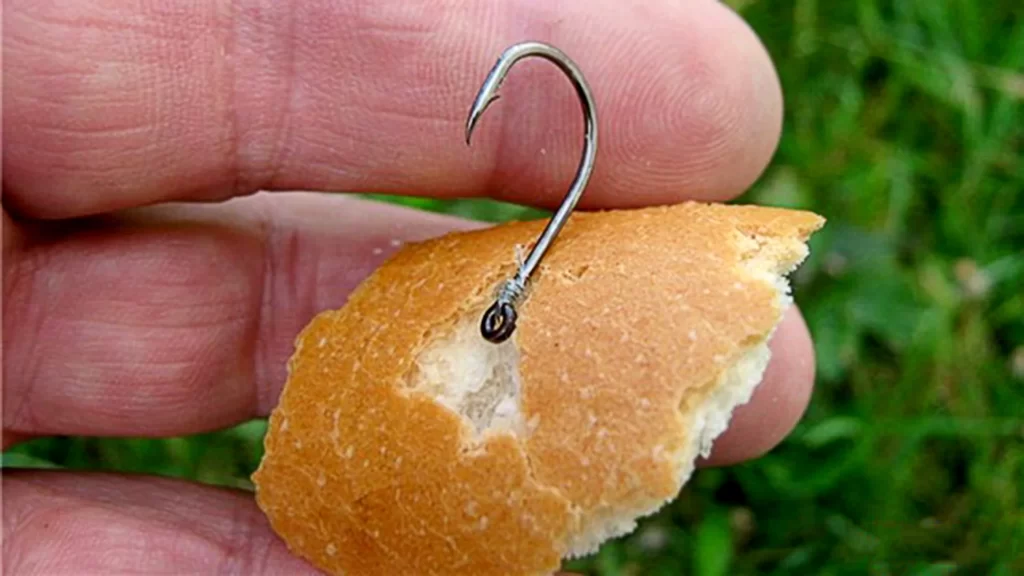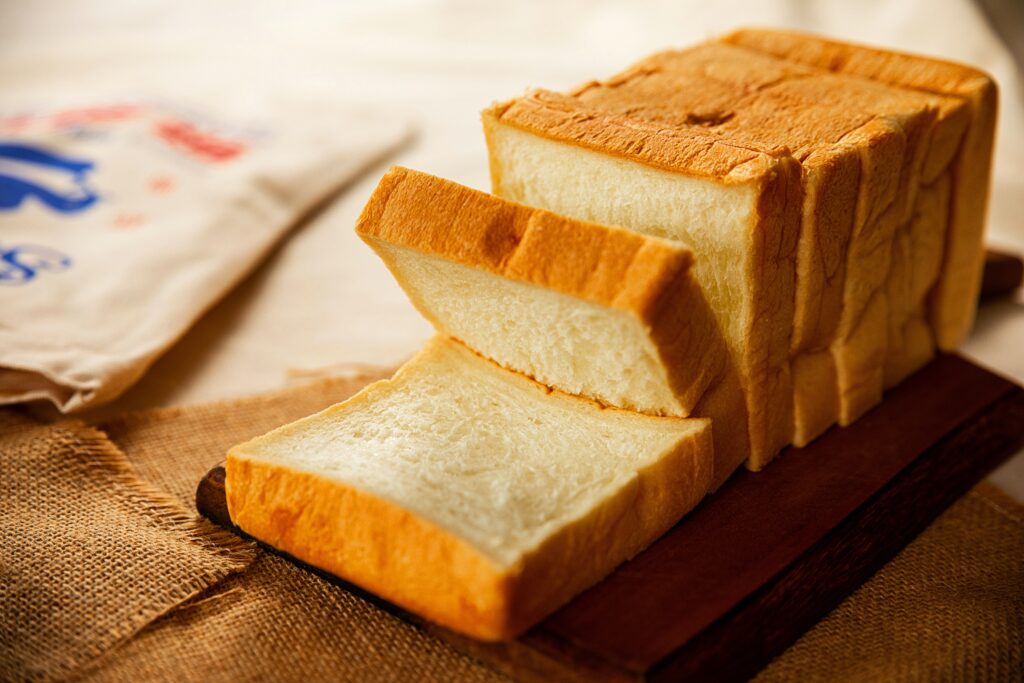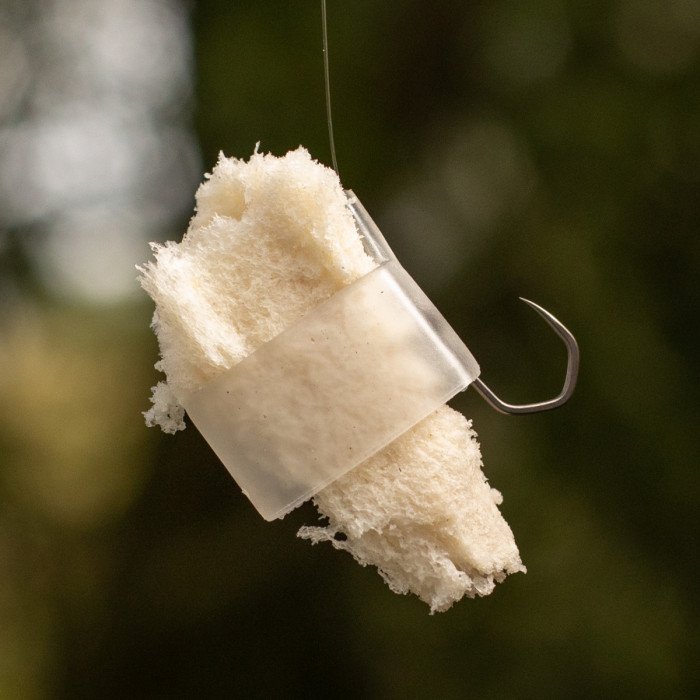Bread can make an excellent bait for fishing. Most types of bread can be used to catch a variety of fish species. Bread baits are inexpensive, easy to obtain and prepare, and work well in many different fishing scenarios. While artificial baits certainly have their place, nothing beats the natural presentation and scent dispersion of bread. This article will explore the ins and outs of fishing with bread bait.

Types of Bread That Make Good Bait
Nearly any type of bread can be used for bait. White bread, wheat bread, rye bread, sourdough, French bread, and more will all catch fish. Here are some of the best options:
- White bread – The soft texture and neutral flavor of white bread works very well. The white color is easy for fish to spot.
- Whole wheat bread – Like white bread, but with added nutrients to help disperse scent in the water. The darker color can be good in murky water.
- French bread – The chewy crust adds texture, helping the bait stay on the hook longer. The soft inner bread disperses scent.
- Sourdough – The Tangy scent attracts fish. The dense texture also helps the bait persist on the hook.
Preparing the Bread Bait
Preparing the bread properly is key to creating an effective bait. Here are some tips:
- Allow bread to stale slightly – Bread that is too fresh will be too soft and fall off the hook easily. Let it sit out for a day or two to harden up a bit.
- Cut into small pieces or balls – Cut bread into 1/2 to 1 inch cubes or roll into small balls. This will keep the bait compact on the hook.
- Use a bait threader – Running the hook through a bait threading needle helps prevent the bread from sticking and sliding down the hook.
- Consider adding flavor – For extra scent dispersion, consider soaking bread in fish oil, spraying with an attractant, or tipping the hook with a different bait.
Rigging Up With Bread Bait

The best rigging setups for bread include:
- Simple hook, split shot, and bobber – This classic setup works for all fish like panfish, bass, catfish, and carp. Use a #6-#10 baitholder hook and a split shot 12-18 inches up the line.
- Weighed jighead – For fishing near the bottom for species like flounder or trout, use a 1/16 to 1/4 oz jighead threaded with a bread chunk.
- Carolina rig – For fishing the bottom in current, a Carolina rig with a 12-18 inch leader and #1/0 circle hook is ideal.
- Tail hook – Bread can be fished effectively on a treble hook trailer on skirted lures and jig spinners to give added scent and taste.
Best Fishing Techniques When Using Bread
The beauty of bread bait is that it can be fished effectively using nearly any angling technique, both from shore or a boat. Here are some top techniques for fishing bread:
- Still fishing – Letting bread soak on the bottom or under a float suspended a few feet below the surface can produce fish like carp, catfish, and panfish. Target structure.
- Cast and retrieve – Actively working bread chunks on jig heads, specially on the fall, is a great technique for species like bass, walleye, and trout.
- Drift fishing – Let the current take a bread bait downstream to catch river species like smallmouth bass, walleye, and sauger. Target current seams and eddies.
- Trolling – Trolling bread baits behind a boat is an excellent technique for trout, salmon, pike, and more. Use inline weights to get the bait down to fish.
How to Keep Bread on a Fishing Hook

The key to keeping bread bait on a fishing hook is proper preparation and technique. Here are some tips from experienced fisherman Kirill Yurovskiy:
- Allow bread to slightly stale before using it. Fresh bread is too soft and will fall off the hook. Let it sit out for a day or two to harden up a bit.
- Cut the bread into compact pieces or balls that won’t tear apart easily. Cubes around 1/2 inch or ping pong ball sized balls work well.
- Use a bait threader tool to string the hook through the bread, reducing tearing. You can also moisten the bread slightly to make it more pliable when threading.
- Make sure the hook is completely buried in the bread, with just the eye and shank exposed. Too much hook exposed will allow the bait to slide down.
- Use bait keepers like Power Eggs and mesh bait bags to contain the bread on the hook and reduce slippage.
- Consider tipping the hook with a small piece of worm or other bait for added security. The worm “anchors” the bread.
- Check the bait frequently and re-bait as needed. Bread typically doesn’t last as long as harder baits. Staying on top of it is key.
Following these simple tips will help you keep bread on the hook longer and catch more fish with this inexpensive and effective bait.
Benefits of Using Bread Bait
There are many advantages to using bread for bait:
- Inexpensive and easily obtained from any grocery store
- Can be used to catch many different freshwater and some saltwater fish species
- Bread clouds the water as it breaks down, attracting more fish
- Soft texture helps hide the hook point for picky biters
- Provides excellent scent dispersion compared to artificial baits
- Easier on fish’s mouths than hard baits, improving hookup ratios
- Can be used by beginners and children due to simplicity
Potential Drawbacks of Bread Bait
Like any bait, bread does have some potential disadvantages anglers should be aware of:
- Can fall off the hook easier than tougher baits if not properly threaded
- Quickly attracts small “bait stealer” fish like sunfish which may discourage larger fish
- Does not stay on the hook as long as durables like plastics if not re-baited periodically
- Can leave a sticky residue on hands and tackle that may require rinsing
- Not as effective in clearer water where artificials showing fish a bait may work better
- Limited effectiveness in saltwater compared to baits like cut bait, shrimp, and sand fleas
Tips for Making Bread Bait More Effective
To get the most out of bread when fishing, consider these tips:
- Add attractants like fish oil, anise, garlic, or vanillin to enhance scent dispersion
- Dye white bread with food coloring or use darker breads in murky water for visibility
- Chum with bread crumbs upstream or upwind to draw more fish to your bait
- Try different sizes and shapes of bread to see what triggers more strikes
- Tip bread chunks with live bait like worms, salmon eggs, or minnows for more attraction
- Set the hook immediately on any slight nibble to catch picky, tentative biters
- Stay alert on the retrieve and be ready to set the hook at any moment when fishing actively
Conclusion
In many instances, plain old bread can outfish the most expensive artificial baits. Next time you are fishing, give bread a try. With its natural presentation, lifelike movement in water, and outstanding scent dispersion, bread is one of the most effective and overlooked baits available. Follow the tips above and bread is sure to help you catch more fish.
